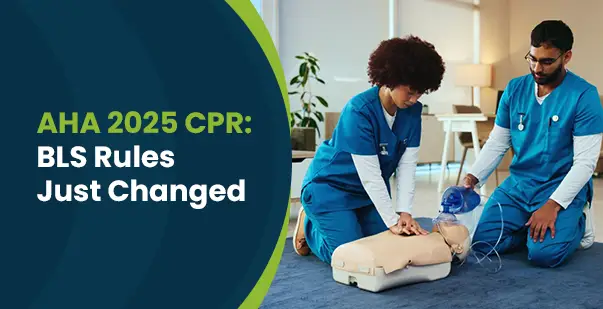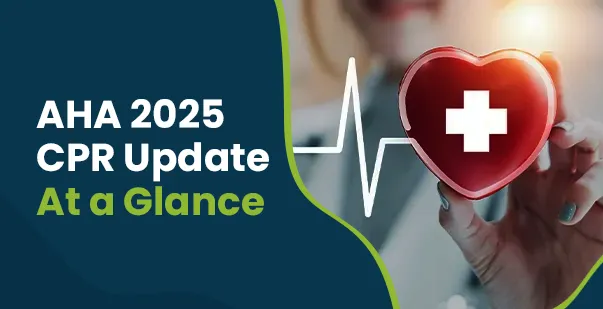Pulseless Electrical Activity (PEA) is a critical medical condition where the heart’s electrical system functions, but the heart muscle fails to contract effectively, leading to the absence of a palpable pulse. This disconnect between electrical activity and mechanical response results in inadequate blood circulation, posing a life-threatening emergency. Prompt recognition and treatment are essential to improve survival outcomes.
PEA is common in cardiac arrest cases. Around 20% of out-of-hospital cardiac arrests start with PEA, and in hospitals, it occurs in nearly 50% of cases. Despite the presence of organized electrical activity, the lack of effective heart contractions makes immediate medical intervention crucial.
So, knowing the causes of PEA and how to treat it is crucial for healthcare professionals. It can make a big difference in saving lives.
This article explains the causes of PEA and discusses the treatments used to manage this critical condition.
What is Pulseless Electrical Activity?
Pulseless Electrical Activity (PEA) happens when the heart’s electrical system looks like it’s working, but the heart isn’t pumping blood. You might see organized beats on a monitor, but there’s no pulse you can feel. This makes it really dangerous because blood isn’t moving around the body like it should.
Doctors try to fix PEA by starting CPR right away to keep blood flowing. They also give medicines like epinephrine to get the heart going. The tricky part is figuring out what’s causing it, like low oxygen, blood loss, or other issues, so they can fix that too.
How Does Pulseless Electrical Activity Work?
At the start of every normal heartbeat, a group of cells called the sinoatrial node (located at the top of your heart) creates an electrical signal. This signal travels through your heart, making the heart muscle contract and pump blood.
This electrical activity can be measured using a test called an electrocardiogram (ECG or EKG). In a condition called Pulseless Electrical Activity (PEA), your heart has electrical signals, but they’re not strong enough to pump blood properly.
There are two types of PEA:
- Pseudo-PEA: The heart muscles squeeze very weakly, moving a small amount of blood. However, it’s not enough to create a proper pulse.
- True PEA: The heart muscles don’t react to the electrical signals at all, meaning no blood is pumped, and there’s no pulse.
If someone’s heart stops, act fast. Call 911 immediately and start chest compressions to increase their chance of survival.
What’s the Difference Between PEA and Asystole?
PEA and asystole are both life-threatening cardiac arrest rhythms, but they differ in their electrical activity and treatment approaches.
PEA (Pulseless Electrical Activity) shows electrical signals on an ECG, but the heart isn’t pumping blood, so no pulse can be felt. Asystole, on the other hand, is when there’s no electrical activity at all, shown as a flatline on the ECG.
Both are serious conditions that can’t be treated with a shock. Instead, they require immediate CPR and a dose of epinephrine to try and restart the heart.
Here are some of it’s key differences:
| Pulseless Electrical Activity (PEA) | Asystole | |
| Definition | Presence of organized electrical activity on ECG without a corresponding palpable pulse. | Complete absence of electrical activity in the heart, leading to a flatline on ECG. |
| ECG Appearance | Displays organized electrical activity that may resemble normal sinus rhythm or other patterns. | Shows a flatline, indicating no electrical activity. |
| Pulse Presence | Absent, despite the presence of electrical activity. | Absent, correlating with the lack of electrical activity. |
| Common Causes | Often due to reversible conditions such as hypovolemia, hypoxia, acidosis, electrolyte imbalances, tension pneumothorax, cardiac tamponade, toxins, or thrombosis. | Typically associated with severe, often irreversible conditions like extensive myocardial infarction or prolonged hypoxia. |
| Treatment Approach | Immediate CPR and administration of epinephrine every 3–5 minutes, focusing on identifying and treating reversible causes. | Immediate CPR and administration of epinephrine every 3–5 minutes; focus on identifying reversible causes, though prognosis is generally poor. |
| Prognosis | Varies depending on the rapid identification and treatment of underlying reversible causes. | Generally poor due to the complete lack of electrical and mechanical heart activity. |
Common Causes of Pulseless Electrical Activity
PEA is categorized into two primary types based on its underlying causes:
- Primary PEA
- Primary PEASecondary PEA
Let’s break down these types in detail.
1. Primary PEA
Pulseless Electrical Activity (PEA) happens when the heart’s electrical system is working, but the heart muscle isn’t pumping blood effectively, so there’s no pulse. This can be due to problems within the heart itself, like a big heart attack that damages the heart muscle.
In fact, studies have shown that about 12.5% of PEA cases are caused by acute coronary syndromes, which are serious heart conditions often involving blocked arteries.
When a coronary artery gets blocked, the heart muscle doesn’t get enough blood, leading to PEA. Quick diagnosis and treatment are vital to restore blood flow and improve outcomes.
2. Secondary PEA
Secondary Pulseless Electrical Activity refers to a state where the heart exhibits organized electrical activity without producing a palpable pulse, due to non-cardiac factors that impair its mechanical function. These external factors are often reversible and are commonly remembered using the “Hs and Ts” mnemonic:
H’s:
- Hypovolemia: Significant loss of blood or fluids leads to decreased venous return, reducing cardiac output.
- Hypoxia: Insufficient oxygen levels impair myocardial function, preventing effective contractions.
- Hydrogen ions (Acidosis): Elevated acidity in the blood affects the heart’s ability to contract properly.
- Hyperkalemia or Hypokalemia: Abnormal potassium levels disrupt the electrical stability of cardiac cells.
- Hypothermia: Low body temperature slows metabolic processes, including cardiac activity.
T’s:
- Toxins: Presence of drugs or poisons that depress cardiac function.
- Tamponade (Cardiac): Accumulation of fluid in the pericardium compressing the heart and hindering its ability to pump effectively.
- Tension Pneumothorax: Air trapped in the pleural space increasing intrathoracic pressure and collapsing the lung, which shifts mediastinal structures and impairs venous return to the heart.
- Thrombosis (Pulmonary or Coronary): Blood clots in the lungs (pulmonary embolism) or coronary arteries obstructing blood flow.
- Trauma: Injuries leading to conditions like severe hemorrhage or increased intracranial pressure affecting cardiac function.
Now, let’s talk about a case study where Pulmonary embolism leads to secondary PEA.
A 60-year-old male in the United States with a history of deep vein thrombosis presented to the emergency department with sudden onset of shortness of breath and chest discomfort. Shortly after arrival, he collapsed and was found to be unresponsive, with no palpable pulse, yet the cardiac monitor displayed organized electrical activity consistent with PEA.
Immediate CPR was initiated. Bedside echocardiography revealed a dilated right ventricle and signs of right heart strain, suggesting a massive pulmonary embolism as the underlying cause of the PEA. Thrombolytic therapy was administered during resuscitation efforts.
Following the administration of thrombolytics and continued advanced cardiac life support, the patient achieved return of spontaneous circulation (ROSC). He was admitted to the intensive care unit for further management and monitoring.
This case exemplifies secondary PEA resulting from a massive pulmonary embolism—a “T” cause in the “Hs and Ts” mnemonic. Rapid identification and treatment of the underlying cause, facilitated by point-of-care ultrasound, were crucial in reversing the PEA and improving the patient’s chances of survival.
Treatment Strategies for PEA
The only way to confirm if a stopped heart is due to PEA (Pulseless Electrical Activity) is by using an electrocardiogram (ECG). However, ECGs are not always available outside hospitals. Thankfully, the treatment for cardiac arrest is the same, whether or not PEA is involved.
When cardiac arrest occurs, the priority is immediate and effective CPR with chest compressions, especially in non-hospital settings. CPR should continue until emergency responders arrive.
In a hospital, if PEA is identified, these treatments are common:
- CPR: Vital for saving lives both inside and outside the hospital.
- Epinephrine: This adrenaline-based medication can help restart the heart’s normal rhythm. This medicine helps tighten blood vessels, improving blood flow to the heart and brain during CPR. The usual dose is 1 mg, given through a vein or bone every 3 to 5 minutes.
- Addressing the cause: If PEA is caused by issues like blood loss or electrolyte imbalance, treating the root cause is essential to restore heart function.
Prognosis and Outcomes
Pulseless Electrical Activity is associated with a generally poor prognosis, especially when compared to cardiac arrests presenting with shockable rhythms like ventricular fibrillation (VF) or pulseless ventricular tachycardia (VT). Survival rates for PEA are notably lower than those for VF/VT arrests.
So, here are the factors influencing survival rates:
1. Initial Cardiac Rhythm
Pulseless Electrical Activity is a type of cardiac arrest where the heart shows electrical activity, but it doesn’t pump blood effectively, meaning no pulse can be felt.
Unlike shockable rhythms such as ventricular fibrillation (VF) and pulseless ventricular tachycardia (VT), PEA has a much lower survival rate.
Research shows survival rates for shockable rhythms can reach up to 40%, while non-shockable rhythms like PEA are around 2.4%. This highlights the urgent need to quickly identify and treat PEA to improve survival chances.
2. Location of Cardiac Arrest
Survival rates for cardiac arrests caused by pulseless electrical activity (PEA) depend on where the event happens.
PEA arrests in public places have a survival rate of about 14.9%, compared to just 7.5% for those at home.
This difference is mainly because people in public settings are more likely to step in and perform CPR quickly, which plays a key role in improving the chances of survival.
3. Timeliness and Quality of Interventions
Survival outcomes for patients with pulseless electrical activity depend heavily on timely and effective actions.
Starting high-quality CPR right away helps keep oxygen-rich blood flowing, which is crucial to protect vital organs during cardiac arrest. Giving epinephrine within the first 10 minutes can increase the chances of restoring a heartbeat (ROSC).
It’s also important to quickly find and fix reversible causes like low blood volume or a collapsed lung. These steps, taken promptly, can greatly improve a patient’s chances of survival after a PEA event.
4. Advancements in Resuscitation Practices
Over the past two decades, survival rates for patients experiencing pulseless electrical activity (PEA) have shown improvement. For instance, in Seattle, data indicates that one-month survival rates increased from 9.9% between 2000 and 2004 to 14.6% between 2005 and 2010. This positive trend is attributed to advancements in resuscitation techniques and protocols.
Despite these improvements, survival rates for PEA remain lower compared to those for shockable rhythms like ventricular fibrillation.
Ongoing efforts to enhance early recognition and intervention are essential to further improve outcomes for PEA patients.
Recognize and Respond to Pulseless Electrical Activity Promptly
Pulseless Electrical Activity (PEA) is a serious condition where the heart’s electrical signals are working, but the heart muscle can’t pump blood properly, causing no pulse and leading to cardiac arrest. It’s important to recognize this quickly and start high-quality CPR right away to keep blood flowing. Giving epinephrine and quickly finding and treating the causes, like those listed in the “Hs and Ts” mnemonic—hypovolemia (low blood volume), hypoxia (lack of oxygen), acidosis (too much acid), abnormal potassium levels, hypothermia (low body temperature), toxins, tamponade (pressure on the heart), tension pneumothorax (collapsed lung), blood clots, and trauma—can help save a life. Acting fast greatly increases the chances of survival.
FAQs
How can you tell if someone is in PEA?
Pulseless Electrical Activity (PEA) happens when someone is unresponsive, not breathing properly, and has no pulse, even though their heart’s electrical activity looks normal on an ECG. In such situations, it’s important to call for emergency help and start CPR right away.
What is the most common cause of pulseless electrical activity?
PEA can happen because of several reasons, but the most common causes include severe blood or fluid loss (hypovolemia), low oxygen levels (hypoxia), high acid levels in the body (acidosis), and problems with body chemicals (electrolyte imbalances). Quickly identifying and treating these causes is key.
What is PEA and how is it treated?
PEA is when the heart’s electrical activity works but the heart muscle doesn’t pump blood properly, leading to no pulse and a cardiac arrest. Treatment involves starting CPR immediately, giving epinephrine, and figuring out the cause of PEA. These causes can be remembered with the “Hs and Ts”—things like low blood volume, low oxygen, acid buildup, imbalances in potassium, low body temperature, poisons, heart problems, lung collapse, blood clots, or injury.
What does PEA look like on the monitor?
On an ECG, PEA shows up as a heart rhythm that would normally create a pulse, like a normal heartbeat, slow heartbeat, or fast heartbeat. But even though the electrical signals look okay, there’s no pulse, meaning the heart isn’t pumping blood effectively.









